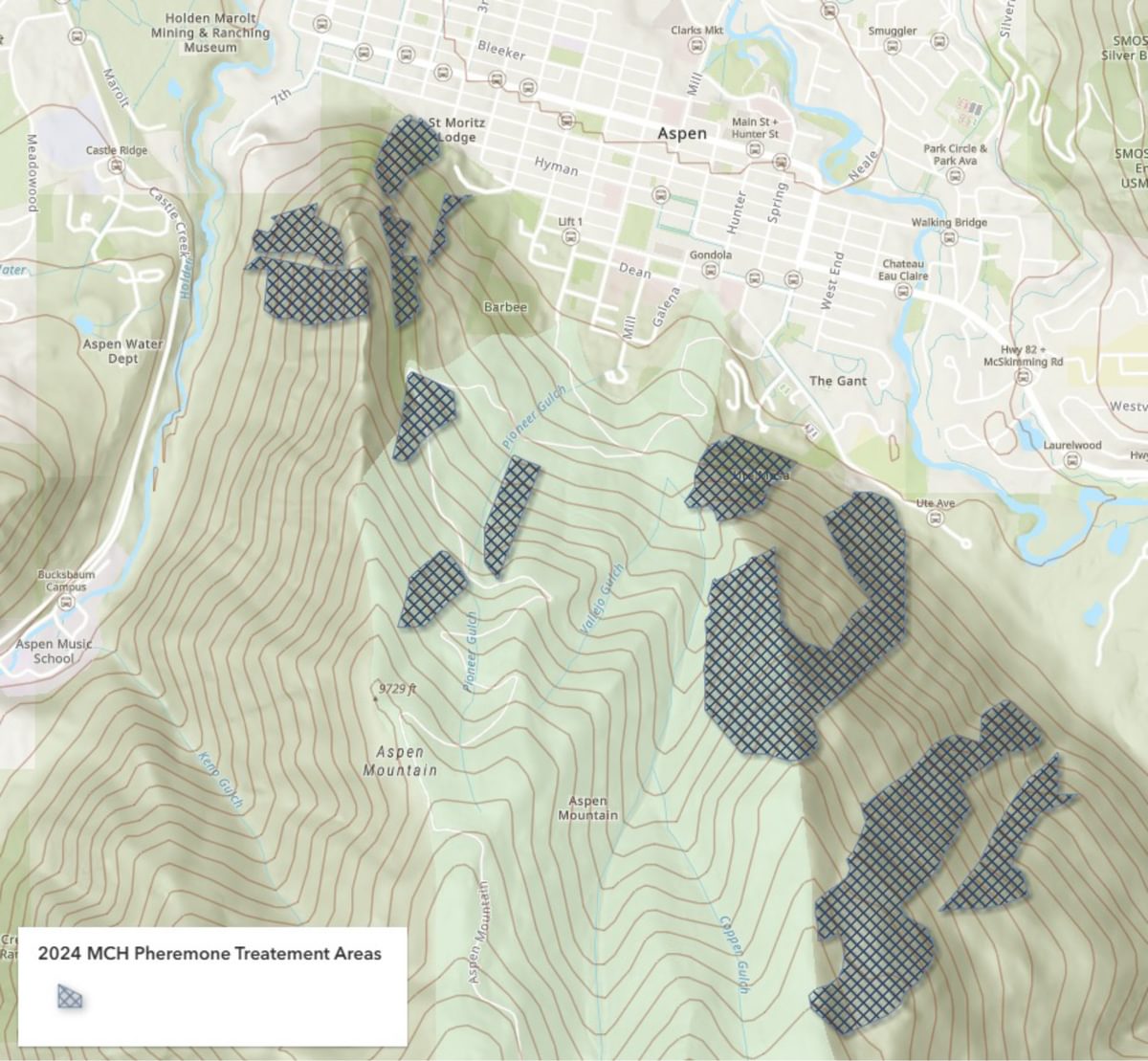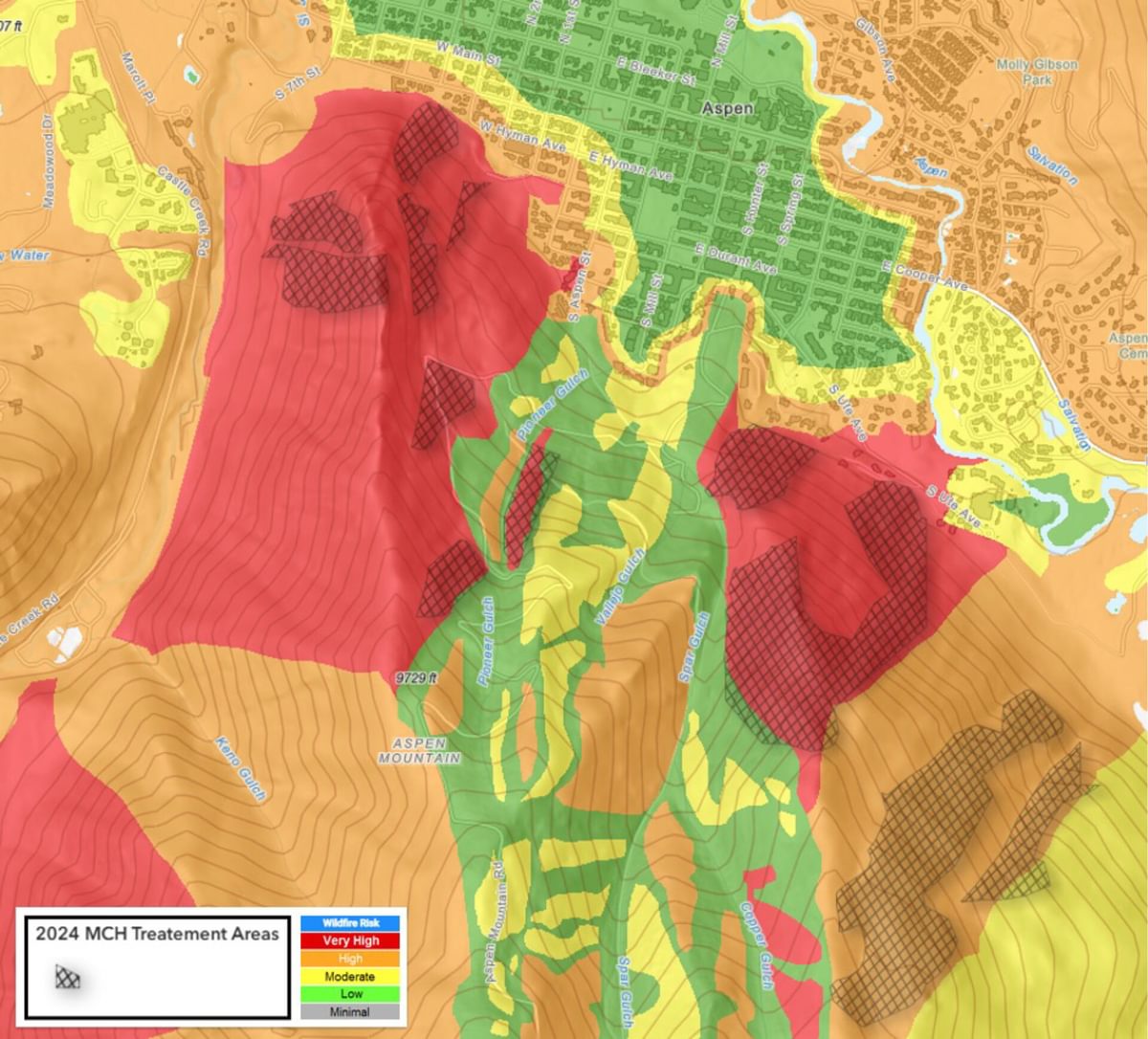During the Summer of 2021 the City of Aspen, Pitkin County, Aspen Fire, Aspen Skiing Company, ACES, AVLT and USFS formed a group to address the spread of Douglas-fir bark beetles on the Shadow Mountain and Ute areas of Aspen Mountain. Each summer since 2022 the group has completed mitigation projects on over 150 acres of forest hanging pheromone packets and tracking beetle populations in the area. The group will continue pheromone treatments and tracking in the summer of 2025. The group will reconvene at the conclusion of 2025 to review new data (beetle population numbers, aerial survey data, and snowpack) and decide whether management in the following season is necessary.
Why is this project important?
- Bark beetles if left unchecked, can spread and kill large areas of the area’s stands of Douglas-fir trees. When beetle populations reach epidemic levels, they begin to attack healthier trees and can alter the forest ecosystem.
- Beetle killed areas are prone to high erosion and are often difficult to revegetate.
- Dead trees can become hazardous in and around high-use areas such as Aspen Mountain
- Dead trees contribute to dry fuels which can become sources of ignition and contribute to hot and fast-moving wildfires. The treatment areas are classified as having very high wildfire risk. Aspen and its core border the treatment areas and are high-priority areas for protection via fuels mitigation efforts. See the map below which shows the overlay of treatment areas in relation to the high-risk areas.



2024 City of Aspen MCH Treatment Area Map
[840.6 KB
image]
Download
2024 City of Aspen MCH Treatment Area Map with Fire Risk Overlay
[589.4 KB
image]
Download
MCH Application Info Sheet
[165.3 KB
pdf]
Download
FAQs
- What are bark beetles and why should we be concerned about them?
- Douglas-fir bark beetles are small naturally present pests that can kill trees if conditions are right and their local populations grow to a large number. If you have Douglas-fir trees especially those that have been subjected to recent drought conditions, you should consider protecting your tree(s).
- Is there anything I should do to help protect trees in Aspen?
- Make sure your tree(s) get adequate water from spring to fall and protect trees or groups of trees which may be susceptible to beetle attack.
- Can I protect my own Douglas-fir trees?
- Yes, you can order MCH and install it yourself or you can hire a forester or arborist to do it for you. If you need assistance or direction as to where to obtain MCH packets, you can contact the City Forester at david.coon@aspen.gov
- Is MCH pheromone effective?
- Yes, studies have shown that MCH packets have a 90% efficacy rate protecting trees against Doug-fir beetle.
- How long will trees need to be treated for?
- MCH pheromone packets will need to be replaced every year until beetle populations have subsided in your area. We will continue to monitor populations on Aspen Mountain and provide updates.
